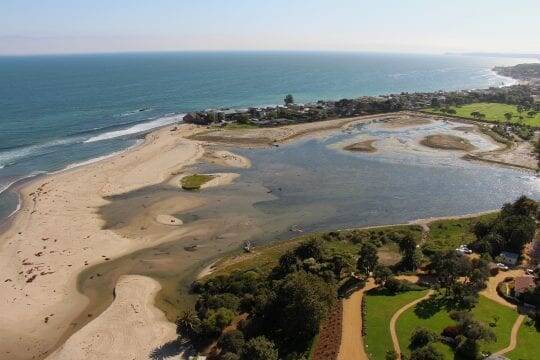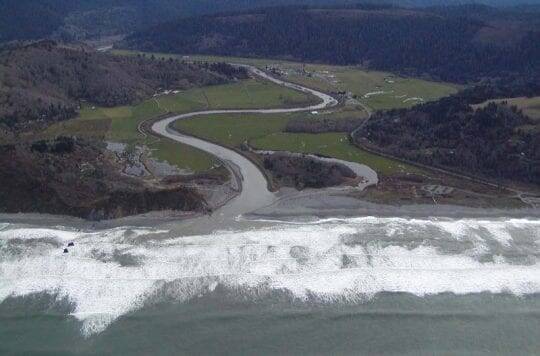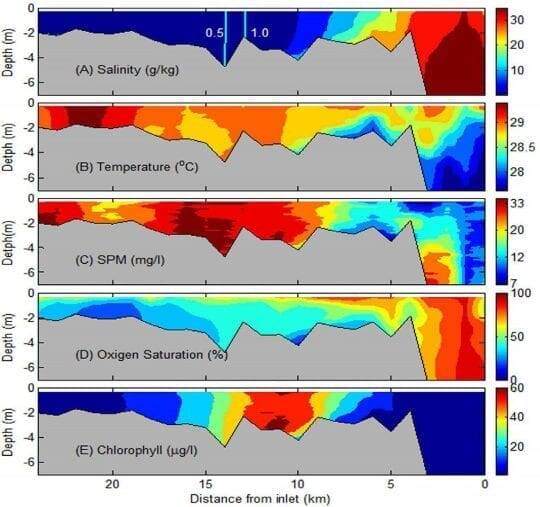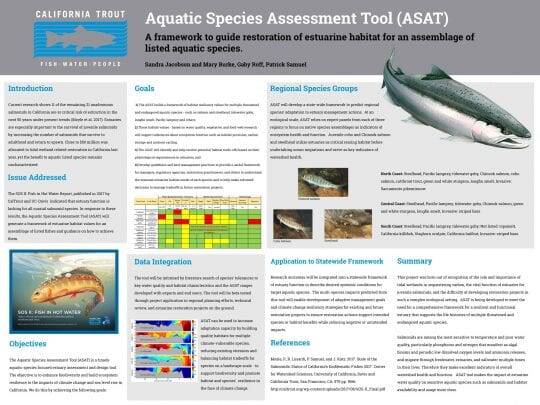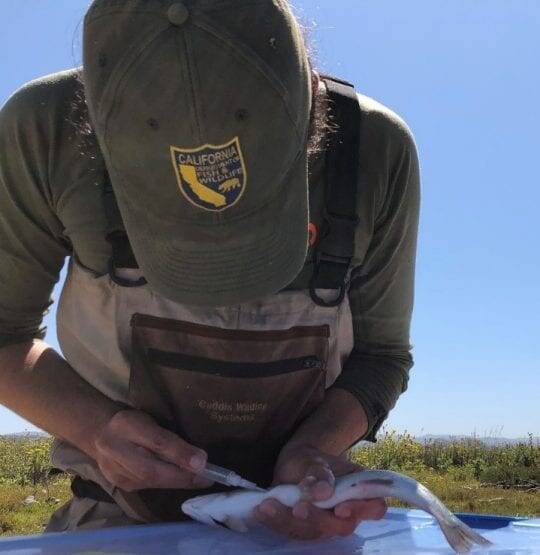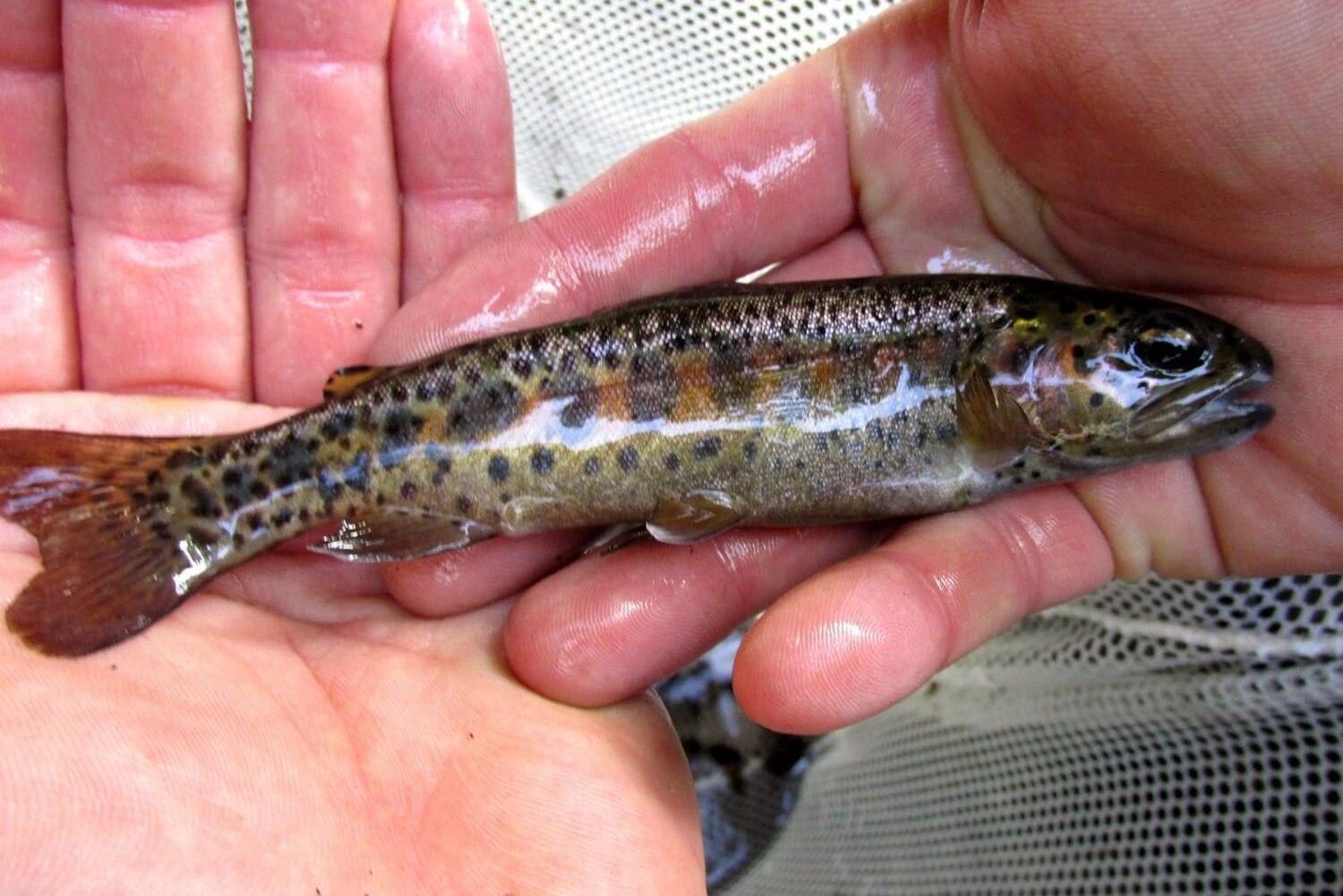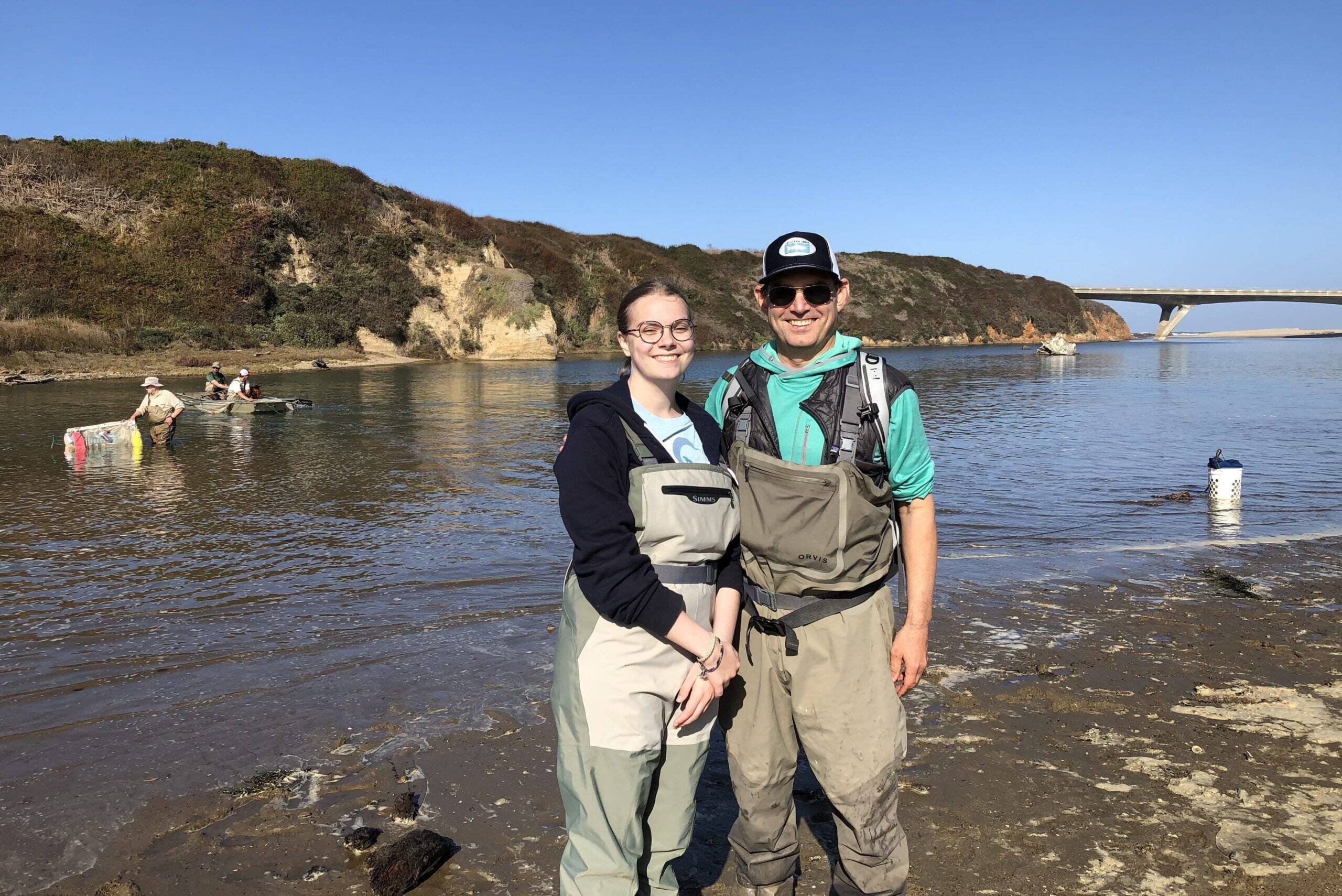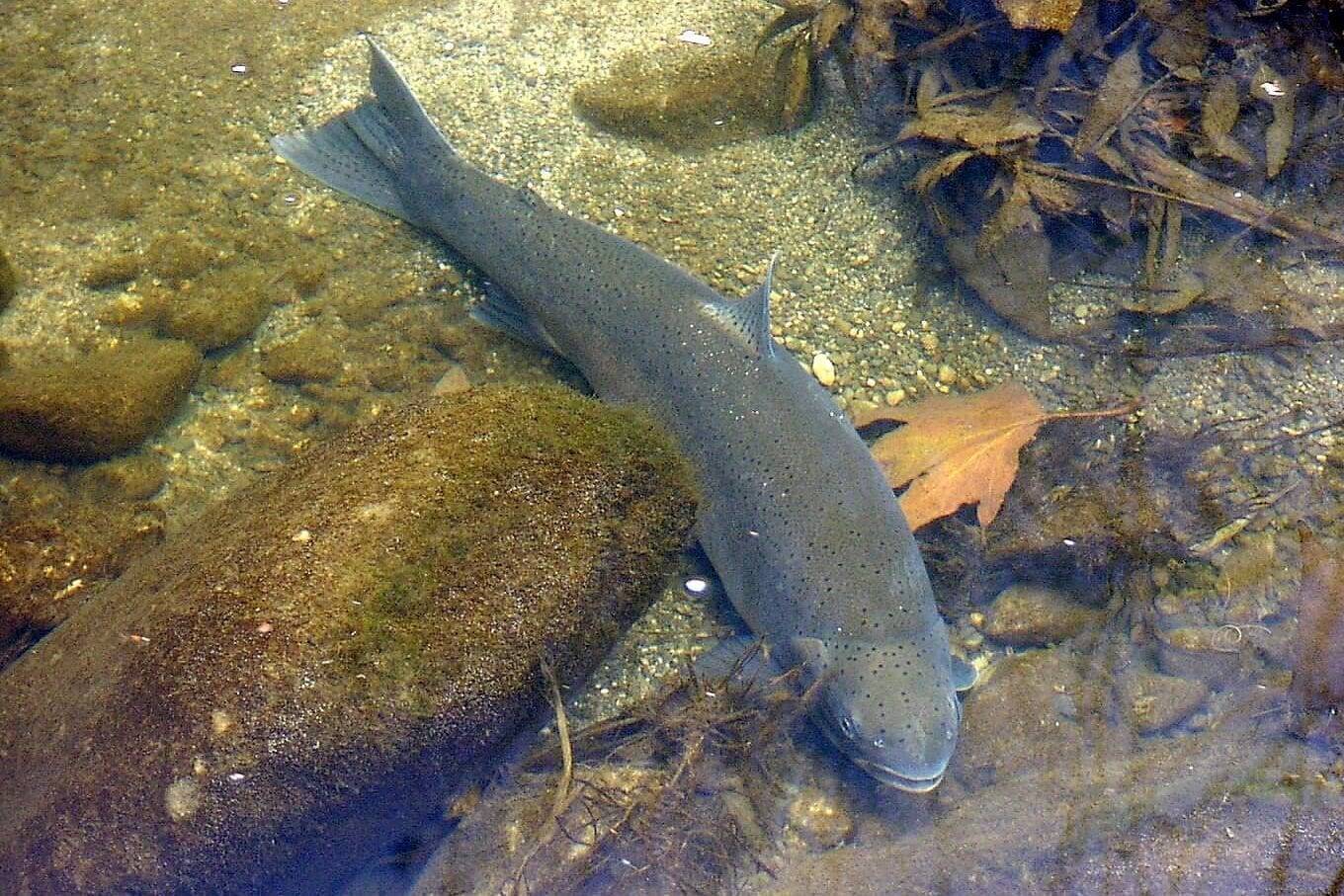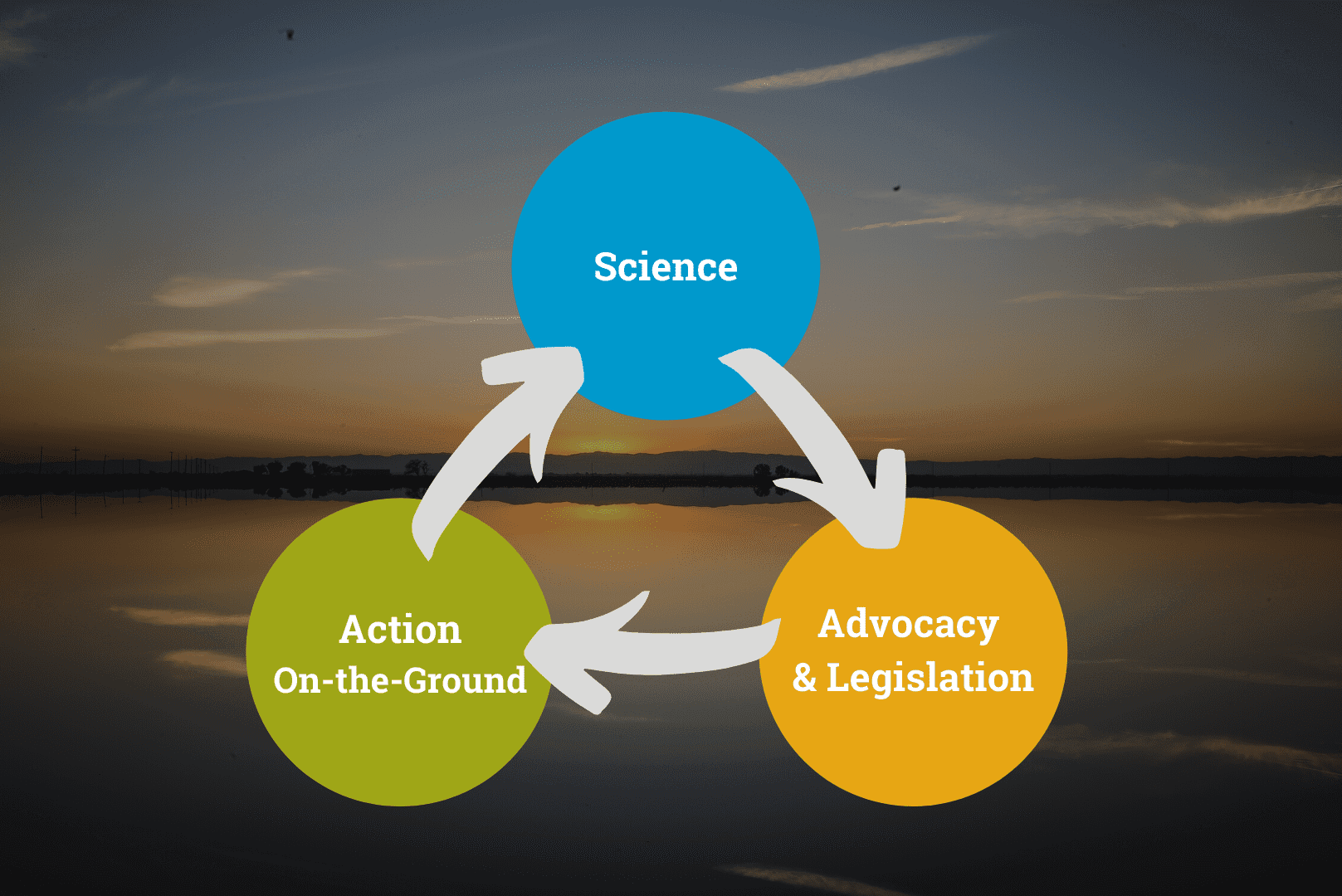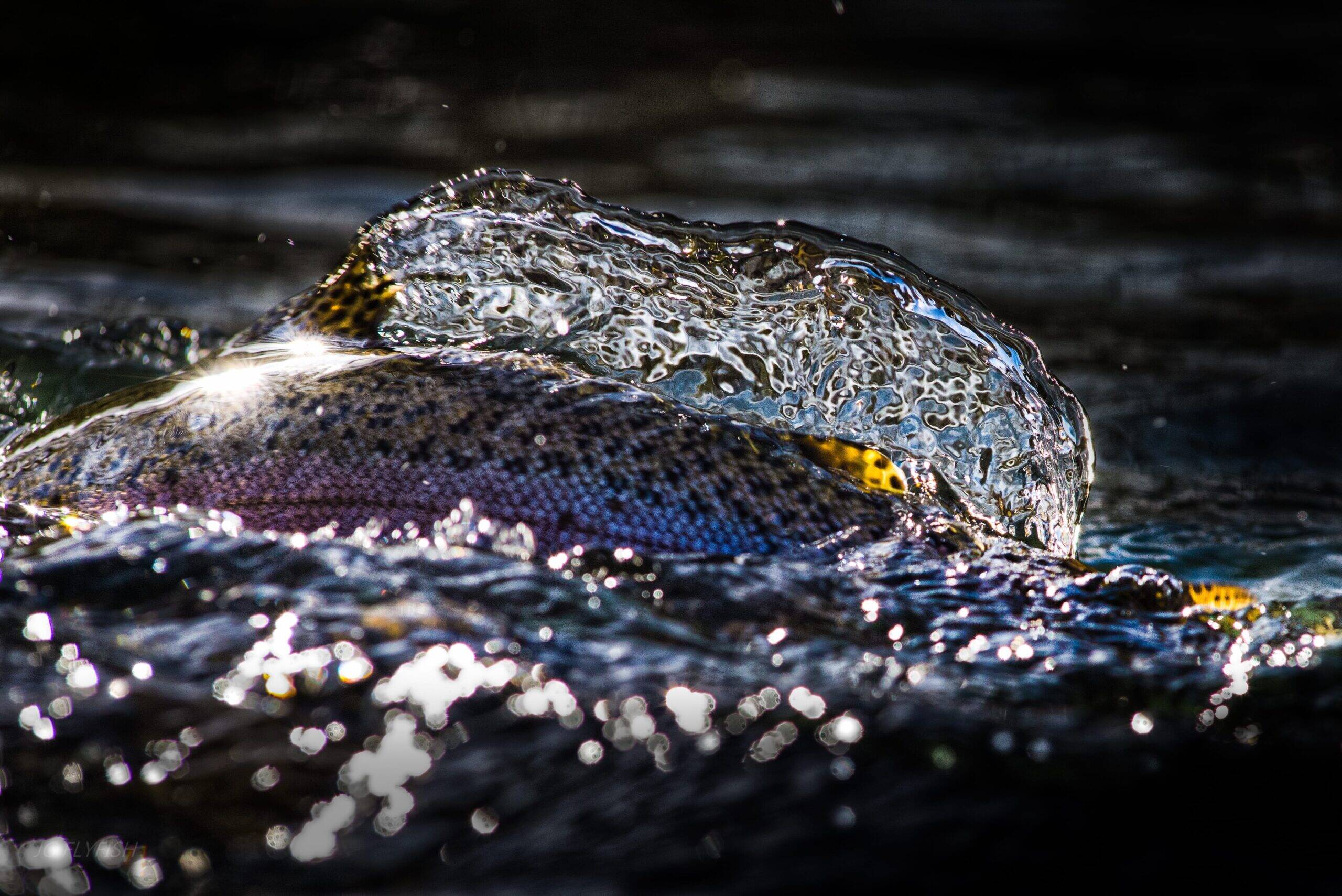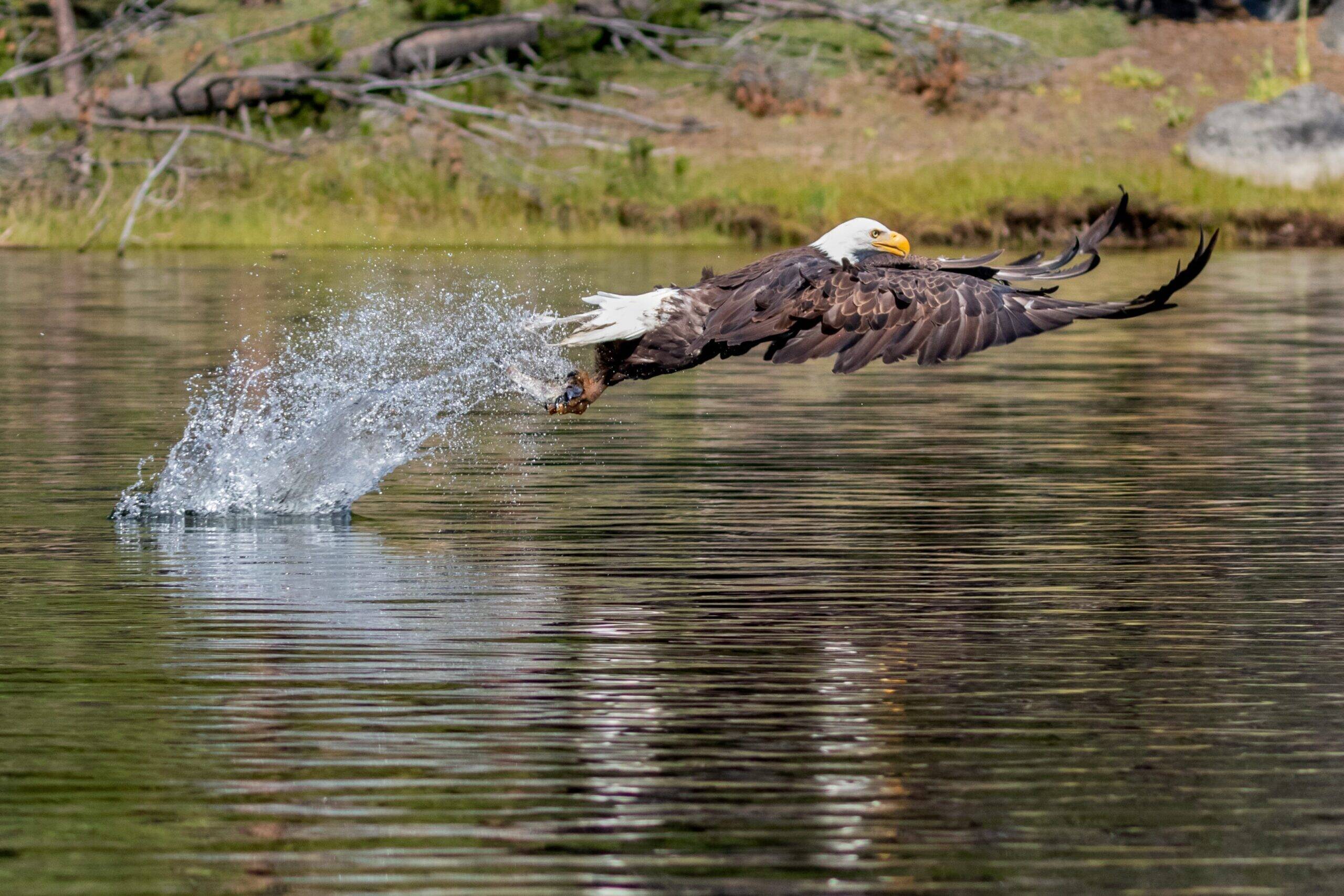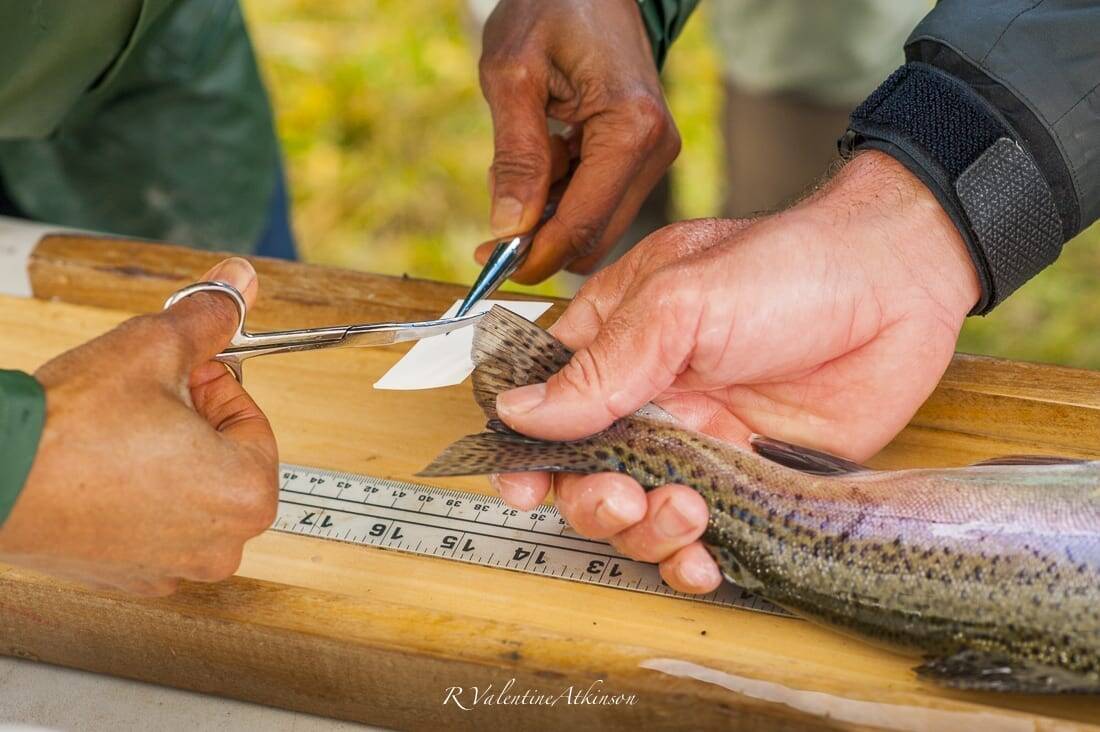By Dr. Sandra Jacobson,
CalTrout South Coast Regional Director
What are Estuaries?
Estuaries are areas where the rivers meet the ocean and are ecologically important to fish and wildlife species because of the rich feeding and nursery habitats they offer. They’re also an important transition area and gateway for aquatic species that migrate between freshwater rivers and the ocean.
When estuaries are degraded by urban impacts such as water pollution, coastal development, and dams – habitat quality declines for native species, while harmful algal blooms and invasive species take hold. Algal blooms can cause sharp decreases in dissolved oxygen levels in the water, to which salmonids are particularly sensitive. The cumulative impact of these habitat issues in estuaries can decimate sensitive species such as steelhead over time.
Salmonids are among the aquatic species most sensitive to high water temperature and poor water quality. They migrate between freshwater and the ocean several times in their live cycle, and use estuaries as the gateway between these two very different environments. Due to their wide-ranging use of different parts of watersheds, they make excellent indicators of overall watershed health and function.
Current research shows 11 of the remaining 21 anadromous salmonids in California are at critical risk of extinction in the next 50 years under present trends. Estuaries are especially important to the survival of juvenile salmonids given their important role, helping to increase the number of adult salmonids that survive to adulthood and return to spawn.
The abundant food sources in estuaries allow them to grow rapidly and given them selective advantage when they enter the ocean. Estuaries are the last stop and therefore the last chance they have to grow before they make the arduous journey into the ocean.
Cover Photo: Santa Clara Estuary. Mike Wier
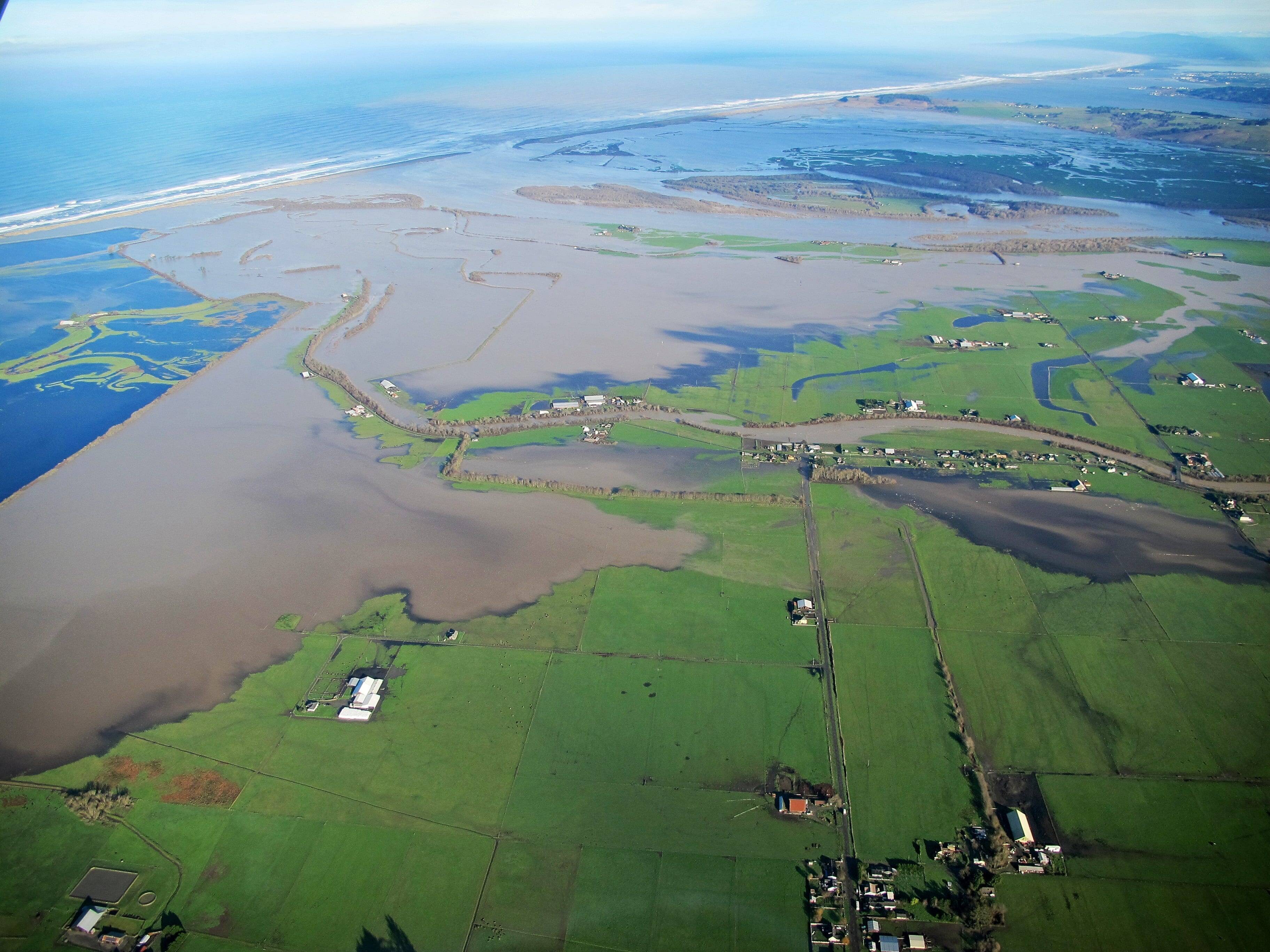
What are the Current Conditions of Estuaries?
Currently, many estuaries have become dramatically reduced in size and quality due to development and watershed modifications.. Some estuaries in the southern coast have particular issues with eutrophication, where water that flows into these receiving waters contains phosphorus and nitrogen from agriculture and urban sources, which feed algal blooms in the lower receiving waters.
These can alter the habitat and water quality, and therefore alter the food web for many aquatic species that use estuaries as an important part of their life cycle.
CalTrout’s Restore Estuaries Key Initiative seeks to nurture the productive and vital land-sea interface to restore function of these critical feeding and nursery habitats.
Restoring function to once-productive but now highly-altered habitats will greatly improve rearing conditions for juvenile salmonids, increasing the likelihood of survival at sea and adults returning to their natal tributaries. And in the face of climate change, this will increase ecological resiliency of our coast to buffer sea level rise.
Photo: Eel River Estuary
The Aquatic Species Assessment Tool (ASAT)
As part of the Restore Estuaries initiative, CalTrout is developing a new estuary assessment and management tool in order to better understand and protect ecologically sensitive aquatic species such as endangered salmonids. The overarching goal is to enhance biodiversity in California’s estuaries and build ecosystem resilience to protect them from the effects of climate change and sea level rise.
The Aquatic Species Assessment Tool (ASAT) will use ecological inputs to predict the impact of management actions on aquatic species communities. Inputs include water quality, habitat and food web complexity, and sensitive species’ seasonal usage such as salmon and steelhead, tidewater goby and Pacific lamprey. Results from the tool can be used to predict responses of aquatic species to changes in their environment from a holistic standpoint. The ASAT will provide a user-friendly tool for resource managers, regulatory agencies, and restoration practitioners to inform decisions in a multi-species context about estuary restoration and management actions.
ASAT is being developed to provide a comprehensive framework for resilient and functional estuaries that support multiple threatened and endangered aquatic species.
This approach yields a trade-off analysis based on species’ physiological requirements to predict growth and viability impacts to various species in response to estuary management actions such as artificial breaching of sand berms, and permitting of housing developments and transportation corridors. The new information that ASAT provides will better inform our future conservation efforts.
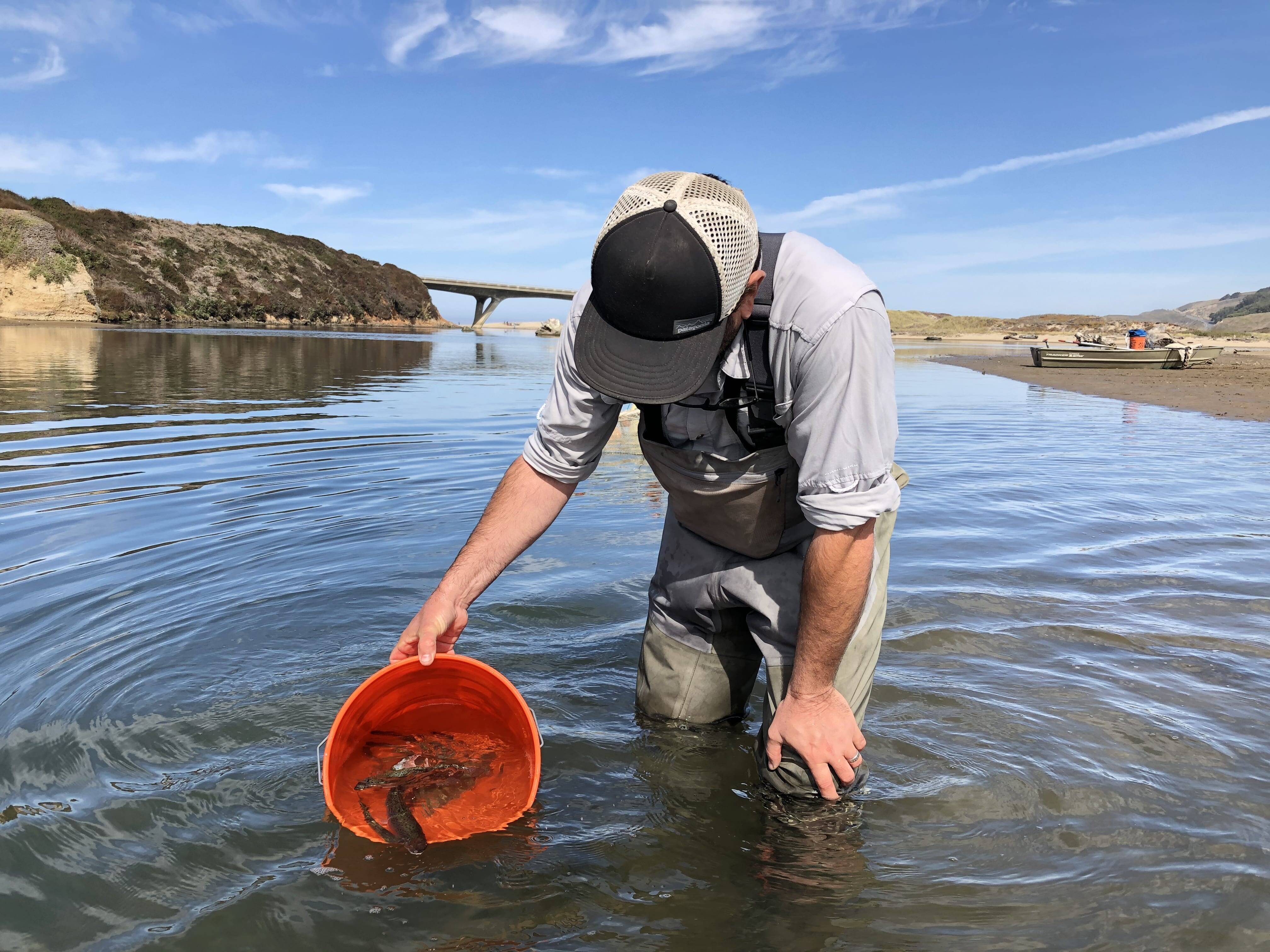
Tracking fish in Pescadero's Estuary
CalTrout’s work to restore estuaries includes a project partnership with the California Department of Fish & Wildlife (CDFW), California Trout, Trout Unlimited, and NOAA Southwest Fisheries Science Center to track tagged fish moving in Pescadero Creek.
Photo: Releasing captured fish back into Pescadero Marsh.
A Passive Integrated Transponder (PIT) tag is a common, non-lethal way to track and uniquely identify individual fish that has been used effectively to monitor and research salmonid populations in the U.S. for decades. A PIT tag is a small, electronic microchip about the size of a grain of rice that is encased in glass and does not reduce fish survival.
Each tag has a unique 16-digit code that can be read using a handheld or other scanner that creates an electromagnetic field, which allows the tag to transmit its unique identification number when triggered by the nearby scanner. The tag remains dormant until the fish comes close enough to the electromagnetic field to become activated and transmit the number for recording. This pilot study seeks to extract more information from fish that have already been tagged by CDFW for their mark-recapture study and will add value to existing operations.
The PIT tag antennae to be used in this pilot are made up of simple wires hooked up to batteries that generate the electromagnetic field necessary to detect fish swimming past the wires in the stream. This system is hooked up to a reader that records the individual tag codes and time of day automatically and stores it for future use on a small computer.
The reasons a PIT tag antennae array was chosen for this pilot study in Pescadero Creek is because they are highly reliable in small stream settings, very efficient in detecting passing fish in the stream in a more cost-effective and less invasive manner than physically recapturing the fish, and their accuracy in reading tags is virtually 100%. A diagram of the PIT tag antennae array setup for this site is shown to the right.

PIT tag antennae control set up.

PIT tag antennae array set up.

How does it work: As tagged steelhead swim through the cable loop, the signal and PIT tag code is automatically sent and recorded on a device attached to the batteries on the bank. With two sets of cables, we can tell if fish are moving upstream or down.
Why are we doing this? CDFW tags several hundred Pescadero steelhead with PIT tags in the Marsh each year. We are supporting their work by tracking steelhead to help understand when the adults migrate upstream to spawn, when the young migrate downstream to the Marsh and Pacific Ocean, what the survival rates of steelhead are, and what the population size is.
Photo: Pescadero Marsh
Project partners: Jon Jankovitz, District Fisheries Biologist with CDFW, Tim Frahm, Central Coast Steelhead Coordinator with Trout Unlimited, and Haley Ohms, Researcher with UC Santa Cruz/NOAA Southwest Fisheries Science Center.
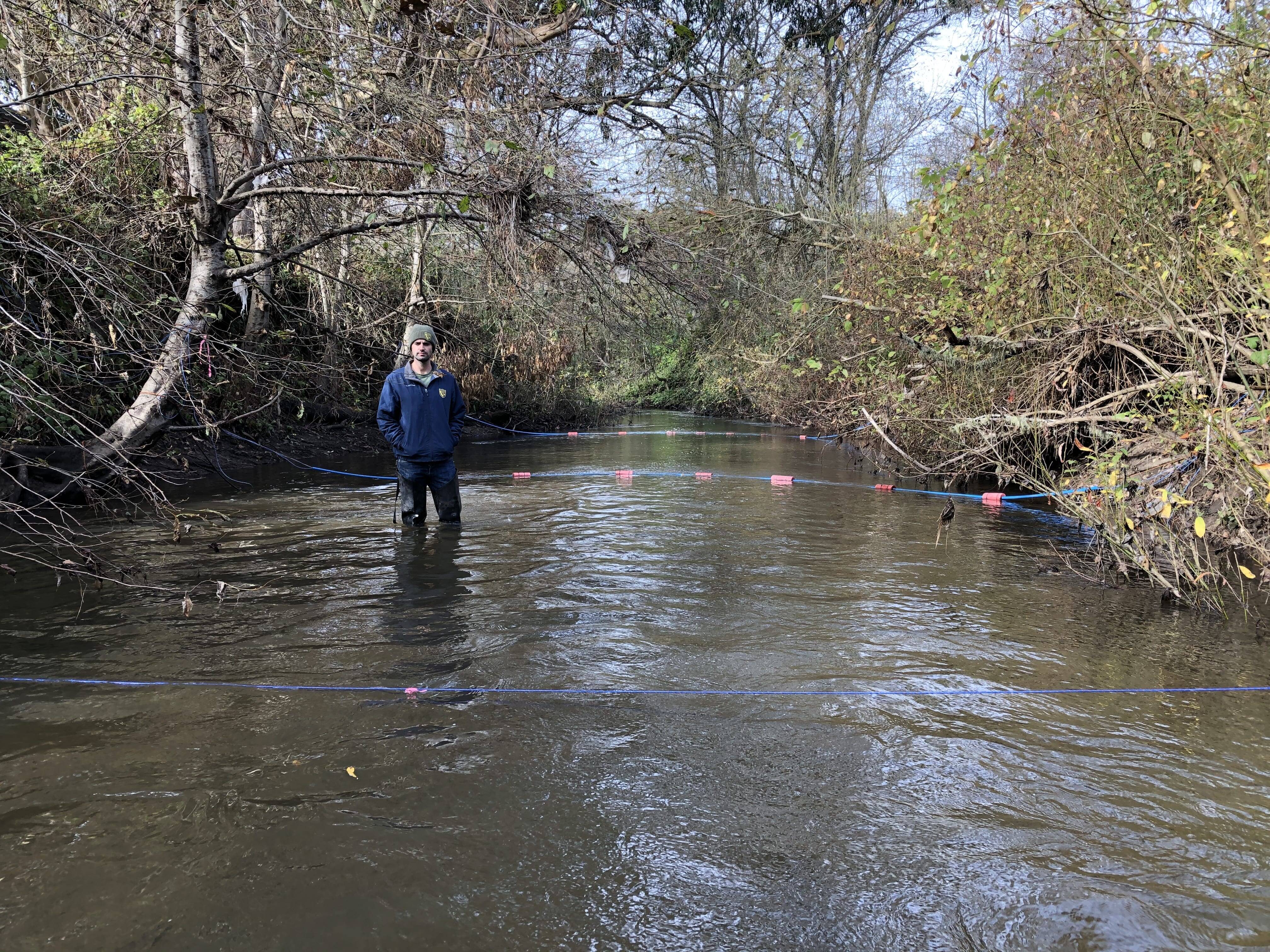
Jon Jankoviz, District Fisheries Bioligist with CDFW.





